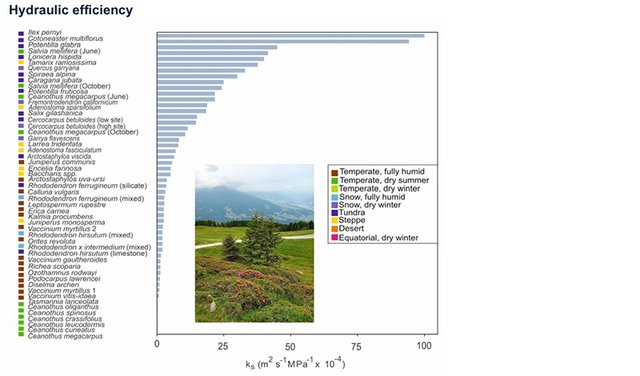Plant Biology is an international journal of broad scope bringing together the different subdisciplines, such as physiology, molecular biology, cell biology, development, genetics, systematics, ecology, evolution, ecophysiology, plant-microbe interactions, and mycology. The Journal Plant Biology is published by the German Botanical Society and the Royal Botanical Society of the Netherlands. Editors are Prof. Dr. Christiane Werner (Freiburg) and Prof. J.T.M. Elzenga (Groningen).
Papers, Reviews, Topics and Theses
In Plant Biology scientists publish original research papers or write reviews. Discussion of hot topics and provocative opinion articles are published under the heading "Acute Views". The papers are peer-reviewed by independent scientists.
How to publish Open Access for free
Members of German academic institutions can publish plant science results in our journal Plant Biology open access for free (due to the DEAL-Agreement). Since 15th February 2023 the new website of the DEAL Consortium https://deal-konsortium.de/en/ provides all information for German institutions, scientific authors and all interested people.
Impact
Plant Biology’s Impact Factor has now reached 3.87, which is a strong increase on 2020 (3.08 in 2020, Source: Journal Citation Reports, Clarivate Analytics). Plant Biology is now ranked 58/239 in the Plant Science Category, which is the top quartile.
History
Starting in January 2008 the journal will be published every second month by Wiley-Blackwell. The journal is the successor of the "Berichte der Deutschen Botanischen Gesellschaft", published by the DBG from 1882-1987, followed by "Botanica Acta", published by the DBG from 1988 - 1998.
In the years 1999-2007 the journal was published in the Thieme publishing house. Since January 2008 the society's journal is published at Wiley-Blackwell.
Access
Members of the DBG are able to access the journal freely via the Intranet
Volumes and issues are also accessible behind a paywall on the Publishers Website.




















![[Translate to Englisch:] Privacy Policy of the journal Plant Biology (GDPR)](/fileadmin/_processed_/4/2/csm_Banner_Privacy-Policy_1f94a30559.jpg)